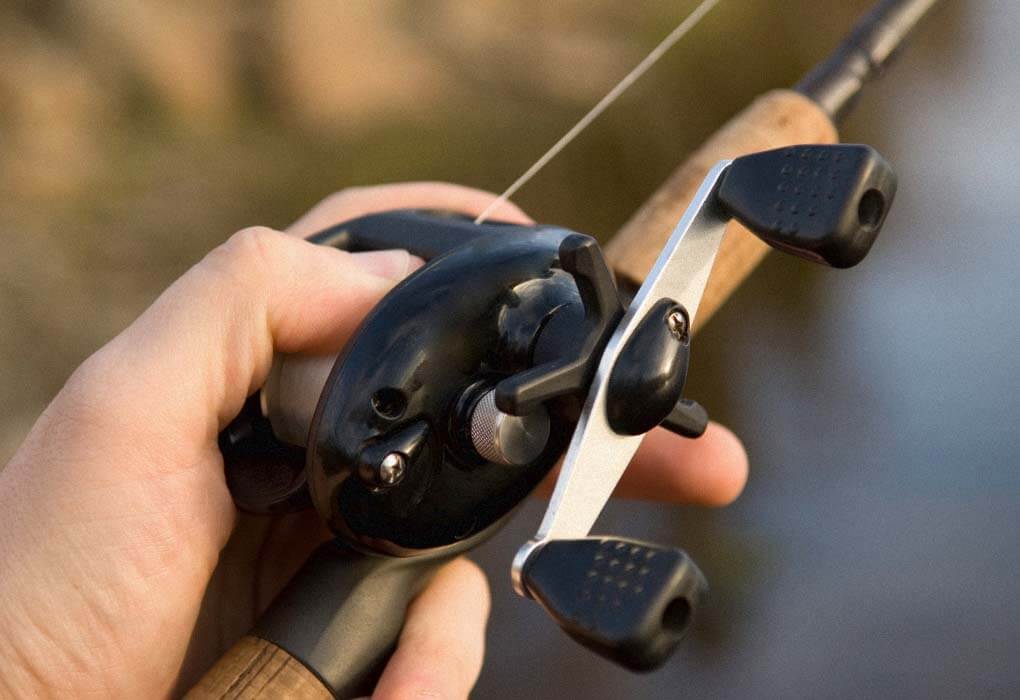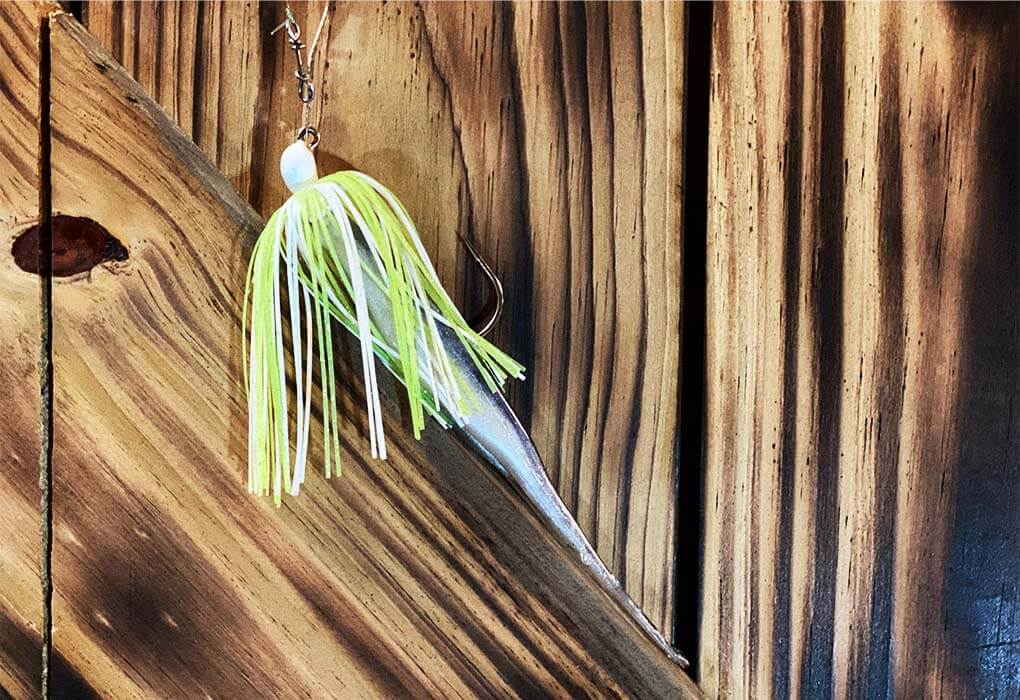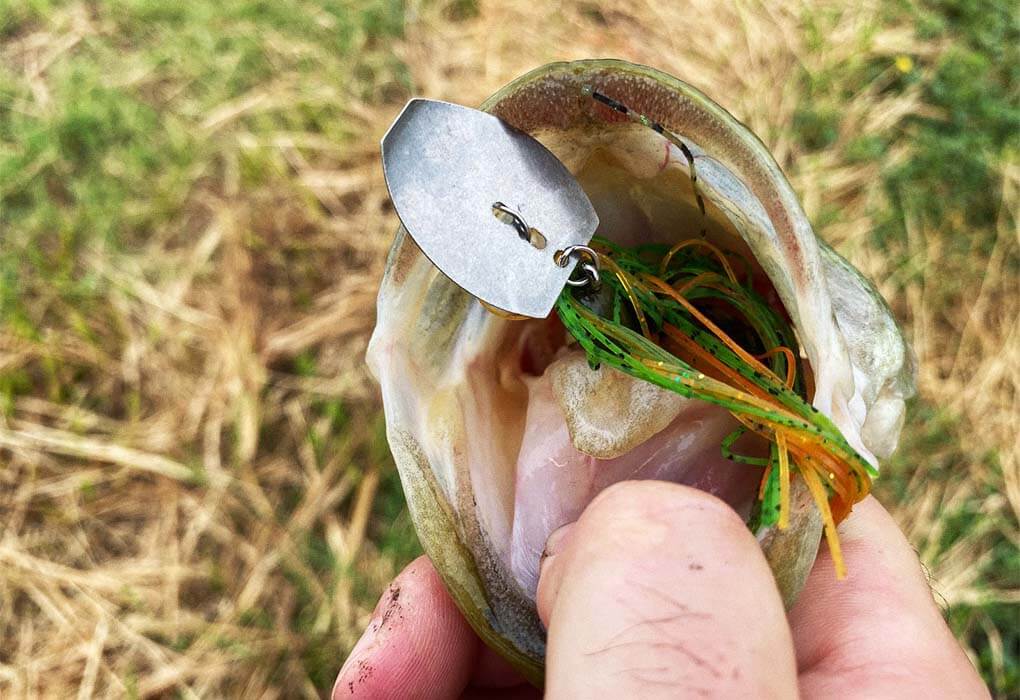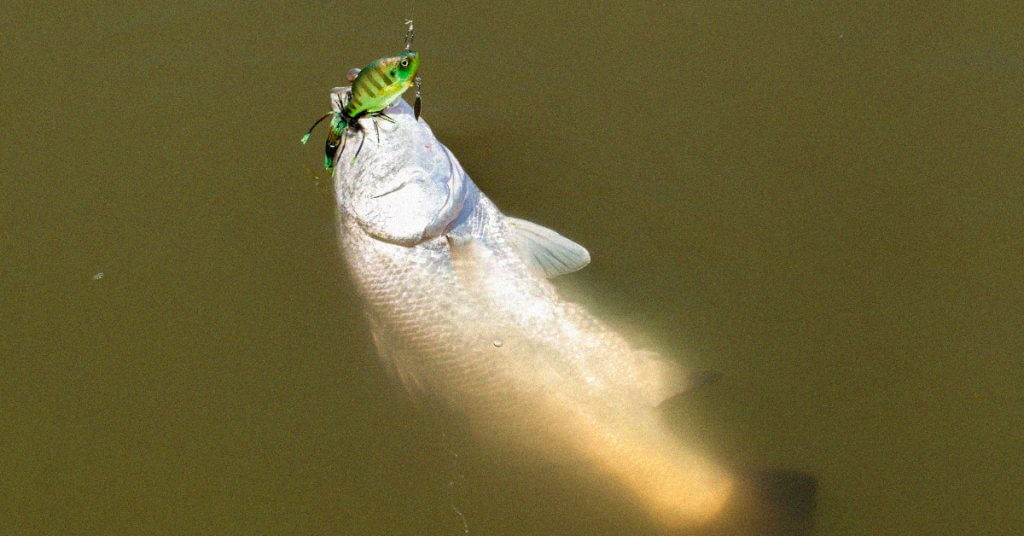
Known by several names, the chatterbait, vibrating jig, or bladed jig is one of the hottest bass fishing lures on the market.
Countless bass anglers swear by it, but if you don’t know how to fish a chatterbait, it will become just another gimmicky lure that works for everyone else except you.
I almost gave up fishing the chatterbait a few years ago, but I’m glad I didn’t quit because I learned how chatterbaits work and caught some of the biggest bass of my life on them.
In this article, I’m passing that knowledge on to you, so you won’t waste your time fishing a vibrating jig incorrectly as I did.
You’ll learn how to fish a bladed jig by season, how it works, what rod and reel are best, rigging tips, and the techniques I use most often to catch lunkers.
Community Coordinator Wes Littlefield shows us how he fishes the chatterbait based on the conditions in this YouTube video.
How to Fish a Chatterbait by Season
Varying your approach by the time of the year is one of the most critical aspects of chatterbait fishing.
You’ll notice I skipped winter because I don’t use a chatterbait when the water is cold. The vibrating jig is a moving bait which is why I only use it when bass are on the move.
Knowing when to throw a chatterbait will save you a lot of time and frustration.
How to Fish a Chatterbait in Spring
When bass fishing in early spring, I use the dragging technique, which I’ll discuss in detail later. The water is usually just beginning to warm up, so this slow technique gives bass plenty of opportunity to bite the lure.
As the water warms, I switch to the hopping technique. This adds more action to the lure and causes a reaction bite, especially when you hop it into a bass’s bed during the spawn.
How to Fish a Chatterbait in Summer
When spring transitions to summer bass fishing, I speed up my retrieve. I’ll reel in a bladed on a steady retrieve as I do with shallow diving crankbaits.
If that’s not getting bites, I’ll switch to the hopping technique, which imitates an injured bait fish.
During the hottest times of the year, you might need to slow way down, and that’s when I begin slow rolling the chatterbait, which is barely faster than dragging it.
How to Fish a Chatterbait in Fall
In early fall, I stick with the two main presentations I used in the summer; however, I usually begin with hopping the lure instead of the steady retrieve since the bass are in a feeding mood and an injured baitfish is an easy meal.
Late fall means colder water and time to slow down. Dragging the chatterbait is the best way to get a bite in the cooling water.
How Does a Chatterbait Work?

The Z-Man original chatterbait is a simple lure that looks more complicated than it is.
If you’re still wondering, “what is a chatterbait?” I can answer that quickly.
In its simplest form, a vibrating jig is a jig with a blade attached to the eye. Tie your line to the blade via the metal loop and cast it out.
The shape of the blade causes it to vibrate back and forth when it’s retrieved through the water; you will feel the vibrations as you’re reeling.
Some vibrating jig designs allow the blade to hit against the head of the jig, which causes a ticking sound and drives bass crazy.
In clear water, the blade reflects light imitating small shiny fish. In dirty water, the vibration makes it much easier for bass to find the bait.
To sum it up, the Z-Man chatterbait has the action of a crankbait in a jig profile with the flash of a spinnerbait.
How to Fish a Chatterbait for Bass
I always try to keep my fishing as simple as possible. I’m not sponsored or made of money, so I have to make the gear I have work.
With that said, I’m going to recommend a few things that I wish I had and then tell you what I use.
Chatterbait Rod and Reel Setup

Chatterbait fishing is very similar to crankbait fishing, which is why I recommend using a crankbait rod.
Many manufacturers make chatterbait-specific rods that are very similar to a crankbait rod.
You need the rod tip to have some give to it, so you don’t rip the lure out of the fish’s mouth when you set the hook.
You also need the rod to be strong because there is a lot of resistance when you’re reeling the bladed jig. Crankbait rods have both features since they’re typically moderate-action medium-heavy power rods.
The ideal reel is a 6:1 baitcaster. This is the best gear ratio because it allows you to move the lure at the perfect speed and have enough power to horse the fish through the weeds.
Regarding the line, a 25lb test braided line with a 12lb test fluorocarbon leader is what most bass anglers use in most situations.
In a perfect world, I would have this setup, but I currently don’t. Instead, I use a medium-heavy fast-action rod with a fluorocarbon line and a 6:1 gear ratio reel.
I’ve caught a lot of fish on this setup, and I’ve also caught several using a spinning reel with a medium-heavy rod.
So you don’t have to have the perfect chatterbait setup to catch bass, but it does help.
Chatterbait Rigging Tips
One of the most important aspects of fishing a vibrating jig is rigging it properly.
So many anglers overlook this part, costing them a lot of bites.
The most important part of rigging a chatterbait is to ensure the soft plastic trailer is as straight as possible. If the trailer is not straight, the lure will run crooked and not work correctly.
The next thing I try to do is match the color of the chatterbait trailers to the jig color. This helps the presentation appear as natural as possible.
If you’re only able to buy one color, I suggest green pumpkin because it’s a natural color in most locations. My other favorite colors are white and chartreuse, crawfish reds, and black and blue.
The last rigging tip is to use the correct trailer.
If you’re trying to keep the lure off the bottom, I recommend using a flat creature bait.
Using a craw trailer when hopping a chatterbait works great, and a paddle tail swimbait or fluke are the best options when using a steady retrieve.
I start my trip using a small trailer because it’s easier for any bass to get in their mouth, and once I find where they’re at, I increase the size of my trailer to increase the chances of catching big bass.
A worm is the one soft plastic I don’t use as a trailer.

Chatterbait Casting Tips
I primarily use a baitcaster to cast a chatterbait. I don’t use any special technique when casting a baitcaster while using a vibrating jig.
However, one thing I do when I cast has helped me catch more bass.
I simply let it sink to the bottom before I start reeling.
Skipping a chatterbait is an excellent way to get it under overhanging branches and docks. Learning how to skip lures is a wonderful skill to know that will set you apart from the average angler.
Chatterbait Techniques
There are three primary techniques I use when fishing a bladed jig. I drag it, hop it, and steadily retrieve it.
The technique I use depends on the mood of the fish, the time of year, and the location I’m fishing.
The Draggin’ Method
Dragging a chatterbait requires patience because it forces you to fish slowly, similar to a finesse presentation. There are two primary times when I use this presentation, when the water is cold and when the water is really hot.
There’s not much to this technique:
- Cast the bass lure out.
- Let it sink to the bottom.
- Pull the lure with your rod until you feel it vibrate.
- Let it as you reel in the slack.
- Drag it with the rod again.
- Repeat the process until the chatterbait is back to you or you get a bite.
It’s important to remember you’re not reeling to move the lure. This method is for when the bass are lethargic and don’t want to chase their meal.
I usually start by slowly dragging it, and if I’m not getting bit, I’ll pull it quicker. If moving faster doesn’t cause a bite, I know it’s time to switch lures.
I do my best to set the hook sideways when doing this technique.
The Hoppin’ Method
An excellent way to catch fish in warming or cooling water is by hopping the chatterbait along the bottom.
You’re trying to look like a dying shad, bluegill, or fleeing crawdad, so being sporadic is the name of the game.
- Cast the lure out.
- Let it sink to the bottom.
- Pop it off the bottom with your rod, then let it sink.
- Once it has hit bottom, reel in the slack.
- Repeat the process until you get a bite, or bring the bladed jig back to you.
Most of the time, you will get a bite as the lure falls. You probably won’t feel it, so carefully watch your line to see if it moves sideways or twitches.
It’s critical to reel the slack up before setting the hook. The hookset for this technique is up instead of sideways because it’s the most natural motion since you should be pointing your rod down as you reel up the slack.
The Steady Retrieve
This is my favorite method because it’s a simple power fishing technique. You’re essentially fishing a bladed swim jig.
The steady retrieve is very similar to fishing a crankbait with one exception:
- Cast it out and let it sink to the bottom.
- Reel it in.
Sometimes you might need to reel sporadically and jerk it like a jerkbait; other times, you might need to reel it really slow, and still, other times, you might need to reel it as fast as you can.
Play with the speed every time you go out because the fish’s mood will change. I typically begin my trip with a steady, comfortable retrieve, and I slow down if I’m not getting bites.
You don’t need much of a hook set with a steady retrieve, but vibrating jigs have a bigger hook, so I prefer to set the hook hard to ensure the bass doesn’t spit the lure.
My Best Tips for Chatterbait Fishing
I’ve caught smallmouth and largemouth from Oklahoma to Michigan using a chatterbait. I’ve learned how to work a chatterbait and when to use a chatterbait to maximize my success on the water.
Here are a few chatterbait fishing tips I’ve learned the hard way.
- Fish it in shallow water, as in 10’ or less.
- Fish it around structure and cover, not just open water.
- It’s not a great flipping or pitching lure, but it excels along the edge of laydowns, in the grass, and around rock piles.
- Unless you’re going to get hung up, let it sink to the bottom before starting your retrieve.
- Don’t overcomplicate color and trailer selection. Keep it simple.
- When fishing, clear water use natural colors like white or clear. In dirty water, use dark colors like black and blue or bright colors like chartreuse.
- If you’re missing a lot of bites, downsize your trailer before decreasing your chatterbait.
Frequently Asked Questions
Do you fish a chatterbait on the bottom?
Yes, you can fish a chatterbait on the bottom. The great thing about a chatterbait is its versatility; you can fish it fast or slow, on the bottom or higher in the water column.
How many hooks should a chatterbait have?
A chatterbait should have one hook. However, in the spring, you can place a trailer hook on it to double your chances of catching fish that are just swiping at your lure.
What should you do if you don’t have a chatterbait?
If you don’t have a chatterbait and the bass are biting, use a crankbait, swim jig as Brett Hite suggests, or spinnerbait. A bladed jig is a mixture of these three lures.
How do you catch bass on a chatterbait?
To catch bass on a chatterbait, you need to fish in a place where there are bass, cast it out, let it sink to the bottom, and then slowly reel it back.

Last Cast
Learning how to fish a chatterbait has made me a believer in its effectiveness.
I’ve caught some of the biggest bass of my life on a bladed jig, and I know if you start fishing chatterbaits, they’ll become one of the go-to lures in your tackle box.
Because it combines features of a few different lures, the vibrating jig is one of the most versatile lures available to bass anglers.
I love hearing from you in the comments!
What’s your current go-to lure? Mine is my OneCast Fishing bladed jig.





Chatterbait is the best way to catch fishes instantly. Thanks for the guide though
I sure use it a lot!